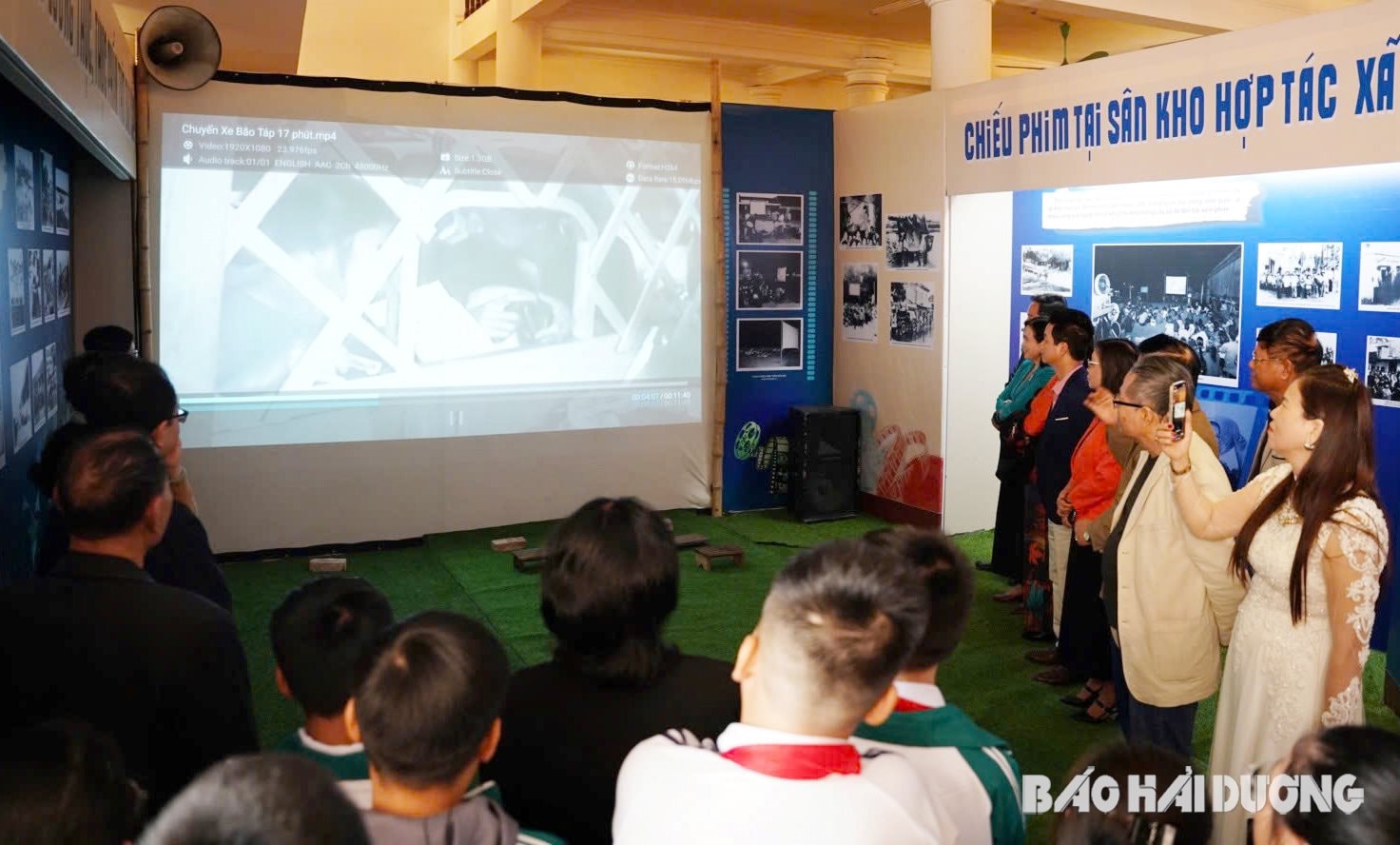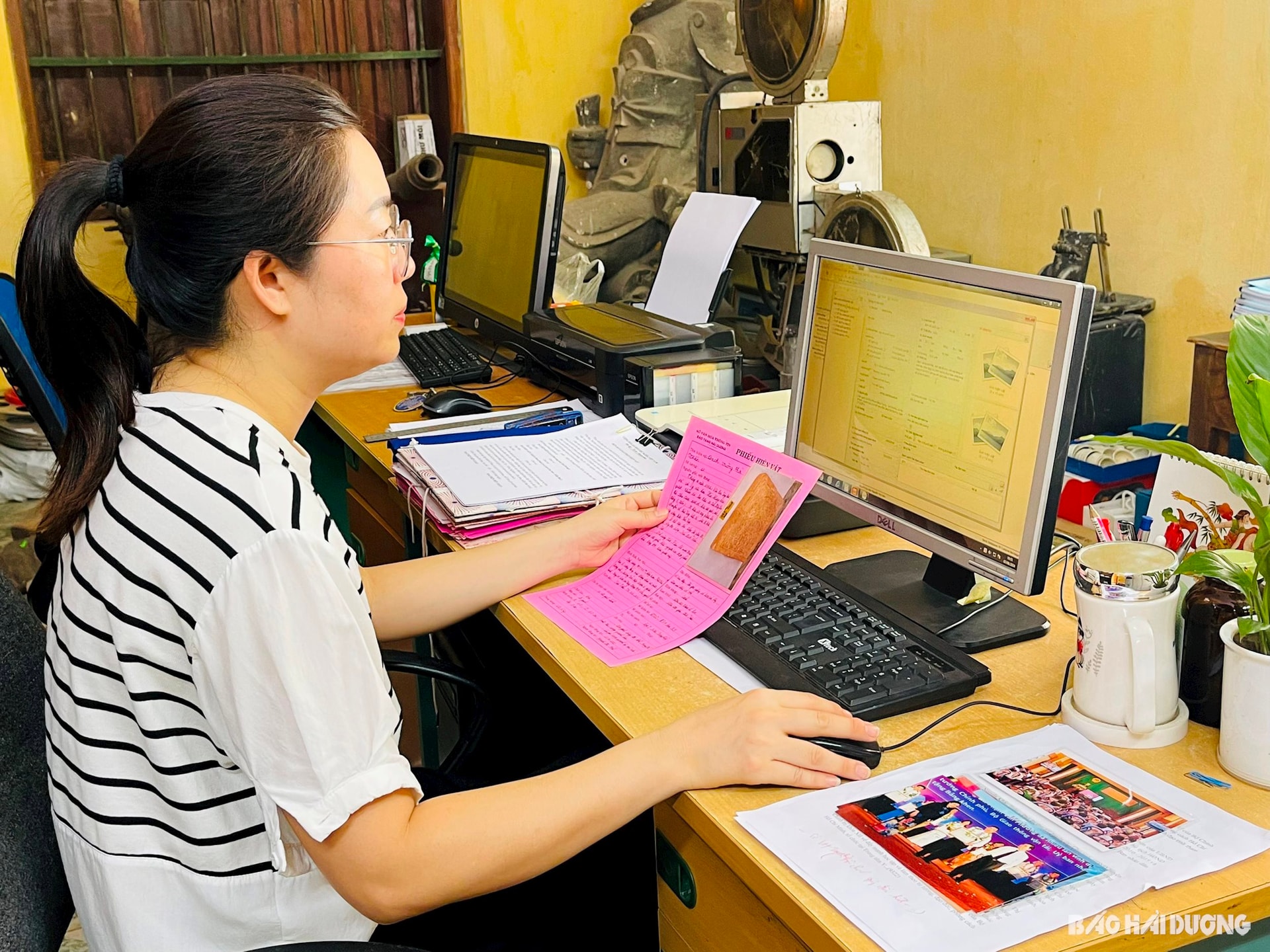Hai Duong Museum is applying technology to serve the conservation and promotion of heritage values quite effectively.

Effective support technology
In charge of uploading the data of the Provincial Museum's artifacts from old books to the software, Ms. Ha Thi Hang, an employee of the Exhibition Department, carefully reviewed the serial number, material, age, etc. before entering and storing them into the Museum and Relics Artifact Management software according to the form provided by the Department of Cultural Heritage.
“With a large number of artifacts, it takes a lot of time to re-enter them into the software, but in the long run, this will bring more benefits, helping to strengthen management and minimize the degradation of original documents. Through classifying artifacts on the archival software, it also helps to provide quick and accurate information, look up artifacts for display…”, Ms. Hang said.
Hai Duong Provincial Museum currently preserves over 52,000 documents and artifacts made from various materials such as bronze, ceramics, stone, wood, paper, etc. Some of these precious artifacts include the Huu Chung bronze drum of the Dong Son culture (recognized as a National Treasure), the Cu Lao Cham ceramic collection, Chu Dau ceramics, cannons, Huyen Quang tomb tower, Han tomb, etc. Each year, the Provincial Museum receives hundreds of additional documents and artifacts for display, sightseeing, and research by the people.
Previously, with this huge volume of artifacts, updating artifacts had to be done completely manually, making it difficult to look up.
But now, with the support of management software by subject, collection, and era, it has helped facilitate research and better inventory and preservation of artifacts.
Up to now, over 15,500 artifacts, documents, and films of the Provincial Museum have been fully updated on the software.
In addition to applying digitalization to documents and artifacts, in recent years the Provincial Museum has also applied the screening of documentary films and short clips to introduce and clarify artifacts related to each exhibition. Such as the exhibition on the prehistoric period, documentary films on the subsidy period, short clips introducing the Huu Chung bronze drum, etc.
Enhance the application

Although this is only the initial approach in applying digitalization at the Museum, the benefits are already evident. This is also an important stepping stone in continuing to increase investment in digitalization and technology applications at the Provincial Museum in the coming time.
According to Director of the Provincial Museum Nguyen Thi Hue, in the digital age, museum digitization is becoming an inevitable trend. Museum digitization not only helps preserve and restore valuable documents and artifacts, but also helps the public access these documents and artifacts quickly and easily anywhere, especially young people. By using digital technology, museums can create interactive experiences, helping people explore and learn about documents and artifacts in a more interesting and vivid way.
In the near future, the museum will invest in building a 3D virtual museum to widely introduce to the public. At the same time, it will continue to digitize, with priority given to digitizing national treasures, artifacts and typical collections of artifacts.
In the long term, the Provincial Museum will invest in applying 3D, 4D technology, automatic explanations... to help people scan QR codes to access more and more detailed artifacts and documents. To implement the above content, the Provincial Museum needs to invest in technical infrastructure, software and human resources.
NGUYEN TRUONG